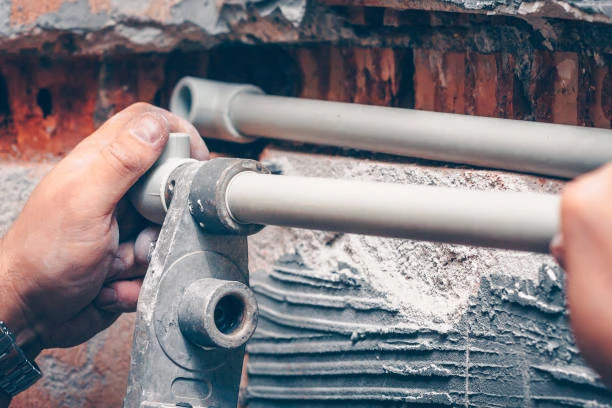Introduction
The plastic hot and cold pipe market is on a remarkable trajectory, projected to reach $9.96 billion by 2029. With the increasing demand for efficient and durable piping solutions in various sectors, this market is becoming an essential component of modern construction and infrastructure development. But what exactly is driving this growth?
Hot and Cold Pipe Market Overview
Currently valued at several billion dollars, the plastic hot and cold pipe market is witnessing a robust growth rate, fueled by the rising demand for plumbing, heating, and cooling systems across residential, commercial, and industrial sectors. Factors such as urbanization, infrastructural development, and the shift towards lightweight and cost-effective materials play a significant role in propelling this market forward.
Market Segmentation
By Type
The market can be segmented into various types, including:
- PVC (Polyvinyl Chloride): Known for its durability and cost-effectiveness.
- PEX (Cross-Linked Polyethylene): Gaining popularity due to its flexibility and resistance to temperature variations.
- CPVC (Chlorinated Polyvinyl Chloride): Preferred for its high-temperature resistance.
By Application
Applications vary widely, including:
- Residential: Plumbing systems in homes.
- Commercial: Pipes used in office buildings and malls.
- Industrial: Heavy-duty applications in factories and manufacturing units.
Hot and Cold Pipe Regional Analysis
North America
The North American market is experiencing steady growth, driven by a booming construction sector and increased renovation activities. Regulations promoting energy-efficient systems also contribute to this growth.
Europe
In Europe, stringent environmental regulations and a push for sustainable building practices are shaping the market dynamics. The region is also witnessing innovations in pipe manufacturing technologies.
Asia-Pacific
Asia-Pacific is anticipated to be the fastest-growing region due to rapid urbanization and industrialization, particularly in countries like China and India.
Latin America
While still emerging, the Latin American market is seeing increased investments in infrastructure, which will likely boost the demand for plastic piping systems.
Middle East & Africa
The demand in this region is largely driven by the oil and gas sector, along with growing urbanization and infrastructure projects.

Hot and Cold Pipe Key Market Trends
Innovations in Materials and Technology
Advancements in manufacturing processes and materials are leading to more durable and flexible piping solutions. Companies are investing in R&D to enhance product quality and performance.
Sustainability Trends
There is a significant shift towards eco-friendly practices in the industry. Many manufacturers are now producing recyclable and sustainable piping solutions to meet consumer demand for greener products.
Hot and Cold Pipe Challenges Facing the Market
Despite its growth, the plastic hot and cold pipe market faces several challenges. Regulatory hurdles related to environmental concerns can hinder market expansion. Moreover, competition from alternative materials like metals and ceramics poses a threat to plastic pipes.
Impact of COVID-19
The pandemic significantly impacted the plastic hot and cold pipe market, disrupting supply chains and slowing down production. However, the market is on the path to recovery, with renewed interest in home renovations and construction projects as economies reopen.
Hot and Cold Pipe Major Players in the Market
Several key players dominate the market landscape, including:
- Uponor
- SharkBite
- Wavin
- Geberit
These companies are actively pursuing strategic initiatives, such as mergers and acquisitions, to enhance their market presence and expand their product offerings.
Hot and Cold Pipe Future Outlook
As we look to the future, the plastic hot and cold pipe market is set to flourish. With ongoing innovations and a growing focus on sustainability, the market’s potential seems limitless. The introduction of smart piping technologies could further revolutionize the industry.
Conclusion
The plastic hot and cold pipe market is poised for substantial growth, driven by a confluence of factors that highlight its increasing importance in modern infrastructure and construction. Technological advancements are playing a crucial role in this evolution, leading to the development of more durable, efficient, and versatile piping solutions. Innovations in materials and manufacturing processes are not only enhancing the performance of these pipes but also contributing to their cost-effectiveness and ease of installation.
Moreover, there is a growing emphasis on sustainability across various industries, and the plastic piping sector is no exception. As consumers and regulatory bodies alike prioritize eco-friendly practices, manufacturers are increasingly adopting sustainable materials and processes. This shift not only meets market demand but also aligns with global efforts to reduce environmental impact, making plastic pipes an attractive choice for eco-conscious projects.
Looking ahead to 2029, it is evident that the plastic hot and cold pipe market holds immense promise. This outlook is beneficial for a diverse range of stakeholders, including manufacturers who stand to innovate and expand their product lines, consumers who will benefit from improved and sustainable options, and investors seeking opportunities in a rapidly evolving market. As urbanization and infrastructure development continue to accelerate, the demand for reliable and sustainable piping solutions will only grow, further solidifying the market’s trajectory. Overall, the combination of technological progress and a strong focus on sustainability positions this market as a key player in the future of construction and utility management.
FAQs
What are the primary applications of plastic pipes?
Plastic pipes are widely used in plumbing, heating, and cooling systems across residential, commercial, and industrial sectors.
How does the market size compare globally?
The market is expanding rapidly in regions like Asia-Pacific, with North America and Europe also contributing significantly to global growth.
What are the main materials used in plastic pipes?
Common materials include PVC, PEX, and CPVC, each with unique properties suited for different applications.
What are the environmental impacts of plastic pipes?
While plastic pipes are durable and often recyclable, concerns exist regarding their production and disposal. Many manufacturers are now focusing on sustainable practices.
How is the market expected to evolve post-COVID-19?
The market is expected to rebound with increased investments in infrastructure and a renewed focus on home renovations, driving demand for plastic piping solutions.


















